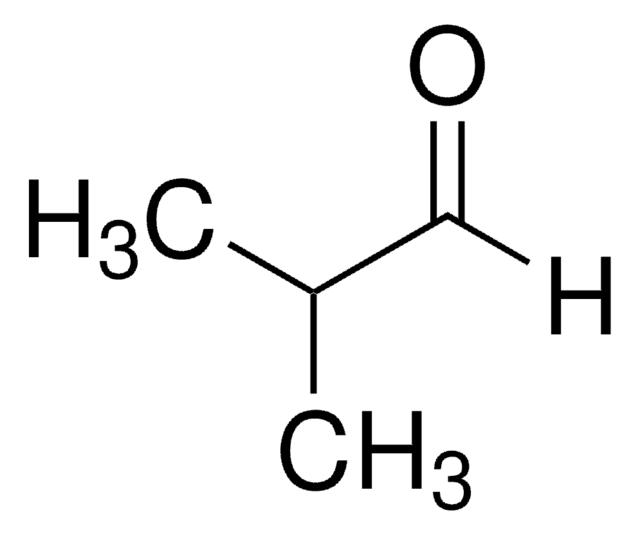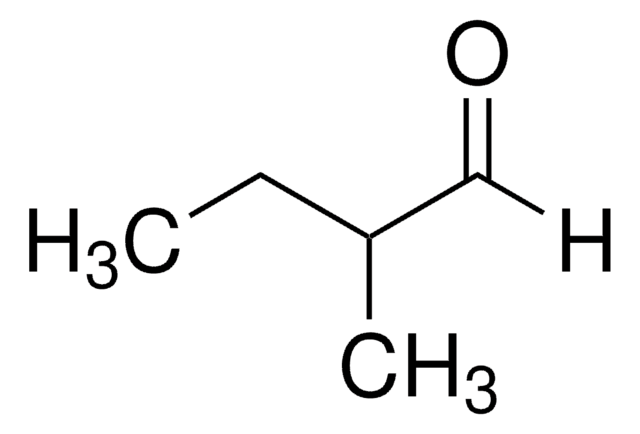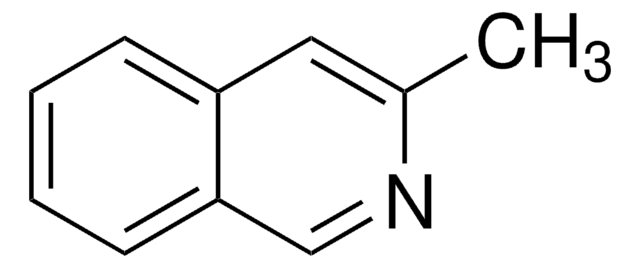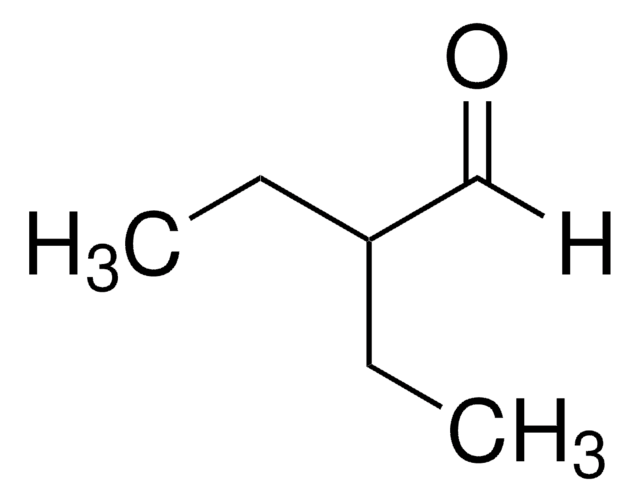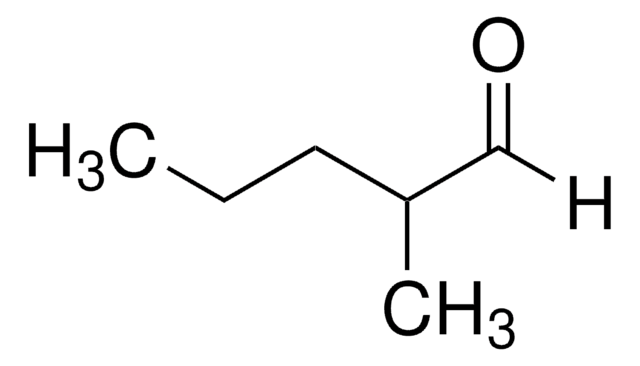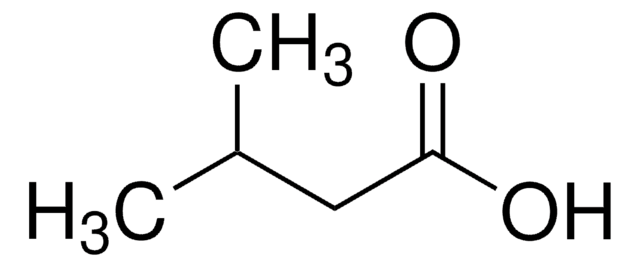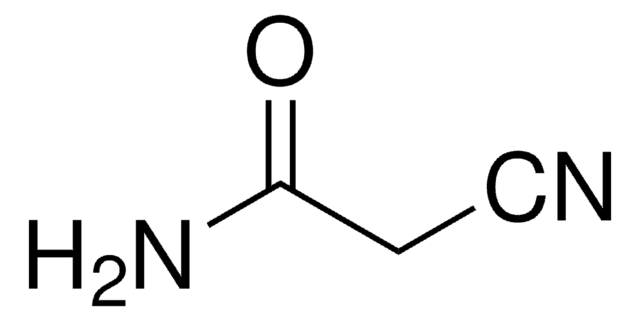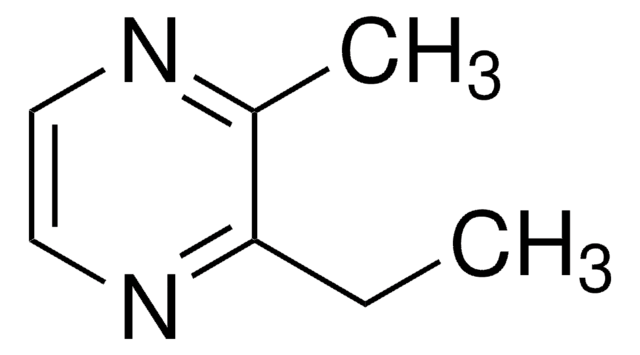Kluczowe dokumenty
146455
Isovaleraldehyde
97%
Synonim(y):
3-Methylbutanal, 3-Methylbutyraldehyde, NSC 404119
About This Item
Polecane produkty
gęstość pary
2.96 (vs air)
Poziom jakości
ciśnienie pary
30 mmHg ( 20 °C)
Próba
97%
Formularz
liquid
temp. samozapłonu
464 °F
współczynnik refrakcji
n20/D 1.388 (lit.)
bp
90 °C (lit.)
rozpuszczalność
alcohol: miscible
diethyl ether: miscible
water: slightly soluble
gęstość
0.803 g/mL at 25 °C (lit.)
grupa funkcyjna
aldehyde
Organoleptyczne
pungent
temp. przechowywania
2-8°C
ciąg SMILES
[H]C(=O)CC(C)C
InChI
1S/C5H10O/c1-5(2)3-4-6/h4-5H,3H2,1-2H3
Klucz InChI
YGHRJJRRZDOVPD-UHFFFAOYSA-N
Szukasz podobnych produktów? Odwiedź Przewodnik dotyczący porównywania produktów
Opis ogólny
Isovaleraldehyde is an attractant and its interaction with zoospores of the fungus Phytophthora palmivora has been studied by binding techniques.
Zastosowanie
Hasło ostrzegawcze
Danger
Zwroty wskazujące rodzaj zagrożenia
Zwroty wskazujące środki ostrożności
Klasyfikacja zagrożeń
Aquatic Chronic 2 - Eye Irrit. 2 - Flam. Liq. 2 - Skin Sens. 1 - STOT SE 3
Organy docelowe
Respiratory system
Kod klasy składowania
3 - Flammable liquids
Klasa zagrożenia wodnego (WGK)
WGK 2
Temperatura zapłonu (°F)
32.9 °F - closed cup
Temperatura zapłonu (°C)
0.5 °C - closed cup
Środki ochrony indywidualnej
Eyeshields, Faceshields, Gloves, type ABEK (EN14387) respirator filter
Wybierz jedną z najnowszych wersji:
Masz już ten produkt?
Dokumenty związane z niedawno zakupionymi produktami zostały zamieszczone w Bibliotece dokumentów.
Klienci oglądali również te produkty
Protokoły
-Tolualdehyde; Valeraldehyde; Isovaleraldehyde
Global Trade Item Number
| SKU | GTIN |
|---|---|
| 146455-100ML | 4061838736840 |
| 146455-2.5L | |
| 146455-25ML | 4061838736857 |
| 146455-2ML | |
| 146455-500ML | 4061838736864 |
Nasz zespół naukowców ma doświadczenie we wszystkich obszarach badań, w tym w naukach przyrodniczych, materiałoznawstwie, syntezie chemicznej, chromatografii, analityce i wielu innych dziedzinach.
Skontaktuj się z zespołem ds. pomocy technicznej